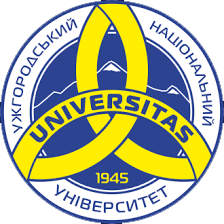EMOTIONS AND EMOTIONAL STATES OF MILITARY SERVANTS: DIFFERENCES AND CLASSIFICATION
DOI:
https://doi.org/10.32782/psy-visnyk/2025.2.5Keywords:
emotions, military personnel, emotional states, classification of forms of the course of emotional states, emotional stressAbstract
The article is devoted to revealing the issue of basic fundamental emotions, their division into various emotional phenomena that perform various functions in the life of military personnel. The article notes that in order to effectively measure the emotions and emotional states of military personnel and provide them with timely psychological assistance, it is necessary to understand the spectrum of their emotions, to understand the peculiarities of those emotional processes that occur in their emotional sphere during service, especially, during and after military operations. It is noted that emotions are that comprehensive phenomenon, that permeates itself all phenomena and spheres of the psyche, deeply penetrating their nature and structure and ensuring the state and level of their intensity functioning and manifestation. It is emphasized that one of the main features of emotions, as a mental phenomenon, is its ability to reflect, that is encode information, coming from the surrounding reality into the subjective attribute of the subject of emotions, and emotions reflect not objects and phenomena as such, but their significance. The reflection of the significance of objects and phenomena is the characteristic of the emotional sphere that distinguishes it from other mental phenomena. The features of the emotional state of military personnel are also represented. The classification of the forms of emotional states is presented: emotional tone, mood, emotions, effect, stress, frustration, passion, higher feelings. A characteristic of each of the military personnel’s emotional states is given. Combat operations, in addition to physical exertion, also impose a great emotional and psychological load on military servicemen. They may experience emotional burnout syndrome as a response to emotional overstrain, which manifests itself in the form of physical and mental exhaustion. This syndrome can become a psychological defense mechanism in the form of partial or complete shutdown of emotions in response to traumatic influences.
References
Izard C. Human Emotoins. New York: Plenum Press. 1977. p. 496. https://doi.org/10.1007/978-1-4899-2209-0
Selye H. Stress of My Life: A Scientist’s Memoirs. New York: Van Nostrand Reinhold Company. 1979. 272 p.
Пророк Н., Запорожець О., Креймеєр Д., Гридковець Л., Царенко Л., Ковальчук О., Невмержицький В., Кондратенко Л., Манилова Л., Чекстере О., Палієнко Т. Основи реабілітаційної психології: подолання наслідків кризи. Пророк Н. (Заг. ред.) Навч. посібник. Том 1. Київ: ОБСЄ. 2018. 208 с.






